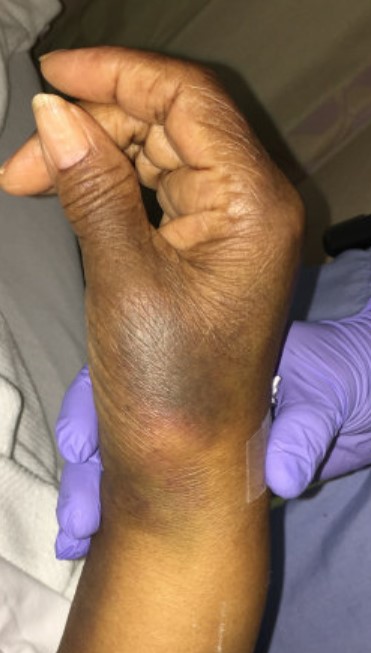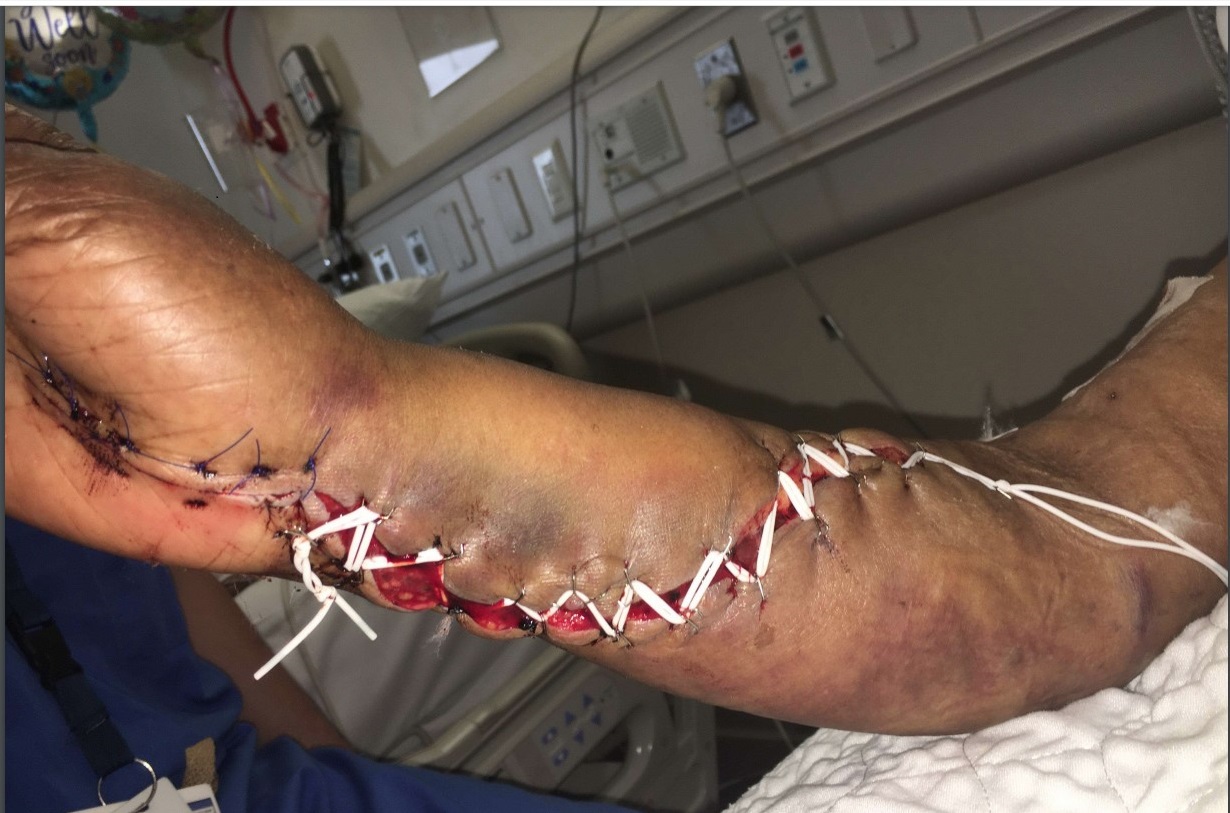Case Presentation: An 89 year old female with a recent admission for left knee atraumatic hemarthrosis a week ago, presented with arm pain to the emergency department. She had bilateral forearm and hand pain, swelling, and paresthesias that had started after getting blood draws at her last hospital stay and had slowly worsened.On physical exam, she had diffuse edema and ecchymosis of her bilateral forearms. Passive range of motion of her bilateral fingers and wrists elicited pain. Her platelets were 409,000 K/cumm, PTT was greater than 150 seconds, INR was 1.3, and fibrinogen was 492 mg/dL. Her PTT mixing study did not correct her prolonged PTT. CT scan showed bilateral forearm volar compartment swelling with effacement of normal intramuscular fat. Her factor VIII activity was <1 and she had a high titer of factor VIII inhibitor. She was given factor VIII and factor VII replacement to control her bleeding and then taken to the OR for bilateral forearm fasciotomy. She was given four doses of rituximab and a prolonged prednisone taper. She was seen in clinic two months later without any recurrence of her disease.
Discussion: This patient had acquired hemophilia due to a factor VIII inhibitor with compartment syndrome of her bilateral forearms likely due to continued bleeding after IV placement and blood draws from her prior hospital stay. Unlike congenital hemophilia, median age of onset of bleeding due to acquired hemophilia is between 60 to 69. Acquired hemophilia often presents with soft tissue bleeding, hematuria, epistaxis, gastrointestinal bleeding and intracerebral hemorrhages. The most common laboratory abnormalities are a prolonged PTT with normal PT and platelet count. If there is a prolonged PTT and suspicion for an acquired factor inhibitor, the next step is a PTT mixing study. If the PTT of the mixed plasma does not correct to normal, it suggests the presence of an inhibitor in the patient’s plasma. After the mixing study, factor VIII activity and the factor VIII antibody titer should be obtained. Inhibitors to factor VIII are the most common cause of acquired hemophilia although other acquired factor inhibitors can also be responsible.(1,2)
Conclusions: This case is unique due to the uncommon presenting problems of hemarthrosis and compartment syndrome. Due to the severity of the bleeding and the need for transfusions, patients are likely to be admitted and under the care of a hospitalist. This disease process is very rare with an incidence of approximately 1 to 4 per million per year. However, it is important for hospitalists to know what to do when they encounter a prolonged PTT given the high mortality rate of these patients which is between 8 to 20%.(2) Any clinical bleeding associated with an isolated prolonged PTT should raise suspicion for acquired factor inhibitor and every hospitalist should know the next steps of the workup and involve a hematologist in the patient’s care.


